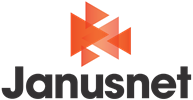While data classification solutions and zero trust architectures might not feel like obvious teammates, a closer look reveals a world of complementary overlap. Zero trust assumes everyone and everything is a threat until proven otherwise. The foundation of an effective zero trust architecture depends on reliable processes to verify when it is safe for an organization to trust information, systems, and networks.
The Forrester Research group coined the term "zero trust" a decade ago and posits that zero trust compliance relies on two factors: (i) robust identity and access management and (ii) a mature data identification and classification framework.
Zero trust networks are split into small groups, and authentication is necessary to access each group. The grouping reduces the footprint of a cyberattack because a hacker cannot freely access an organization's sensitive data or network because of the ongoing authentication requirements. Critical to enabling a zero trust environment is organizational insight and context for where an organization's sensitive information is stored and how it is handled and shared.
Introducing data classification. Data classification solutions enable organizations to identify sensitive information across their environment and mark it according to predefined criteria that reflect sensitivity. Marking information with humanly visible and metadata labels lets organizations and systems check access control permissions, identify which people and systems have accessed sensitive data, and introduce processes and reporting to improve the control, handling, and management of sensitive information.
Knowing where sensitive data resides, which users and what systems can access it, and how it is used and shared is foundational to securing an organization under a zero trust architecture. Humble, inexpensive, and proven data classification solutions significantly improve the effectiveness of zero trust architectures.
The Janusnet difference: foundational data classification solutions for zero trust architectures.
Janusnet’s data-centric data classification solutions let organizations apply user-driven and automated policy-driven markings to a range of market-leading applications and files to support the ‘least privilege’ stance to data, applications, and networks. Benefits include:
- Attribute-based access control (ABAC).
- Enhanced security for sensitive data.
- Full compliance with regulatory and legislative requirements.
- Improved visibility and control of your organization’s data.
- Better decision-making about how sensitive data is handled.
- More secure cross-domain solutions.


